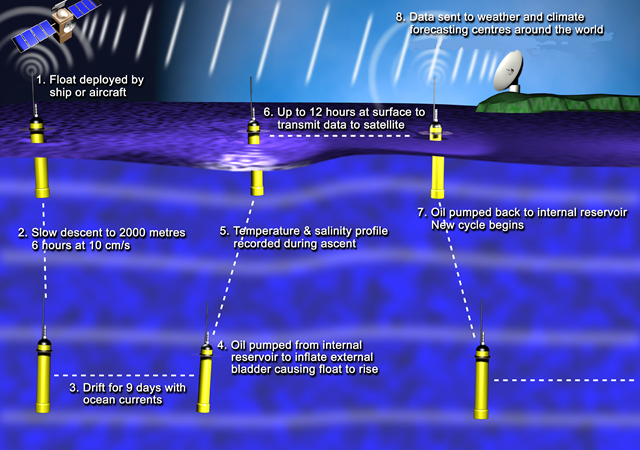Ocean salinities show intensified water cycle
By Staff Writers
Canberra, Australia (SPX) Apr 22, 2010 Evidence that the world’s water cycle has already intensified is contained in new research to be published in the American Journal of Climate. The stronger water cycle means arid regions have become drier and high rainfall regions wetter as atmospheric temperature increases. The study, co-authored by CSIRO scientists Paul Durack and Dr Susan Wijffels, shows the surface ocean beneath rainfall-dominated regions has freshened, whereas ocean regions dominated by evaporation are saltier. The paper also confirms that surface warming of the world’s oceans over the past 50 years has penetrated into the oceans’ interior changing deep-ocean salinity patterns. “This is further confirmation from the global ocean that the Earth’s water cycle has accelerated,” says Mr Durack – a PhD student at the joint CSIRO/University of Tasmania, Quantitative Marine Science program. “These broad-scale patterns of change are qualitatively consistent with simulations reported by the Intergovernmental Panel on Climate Change (IPCC). “While such changes in salinity would be expected at the ocean surface (where about 80 per cent of surface water exchange occurs), sub-surface measurements indicate much broader, warming-driven changes are extending into the deep ocean,” Mr Durack said. The study finds a clear link between salinity changes at the surface driven by ocean warming and changes in the ocean subsurface which follow the trajectories along which surface water travels into the ocean interior. The ocean’s average surface temperature has risen around 0.4 degrees C since 1950. As the near surface atmosphere warms it can evaporate more water from the surface ocean and move it to new regions to release it as rain and snow. Salinity patterns reflect the contrasts between ocean regions where the oceans lose water to the atmosphere and the others where it is re-deposited on the surface as salt-free rainwater. …
